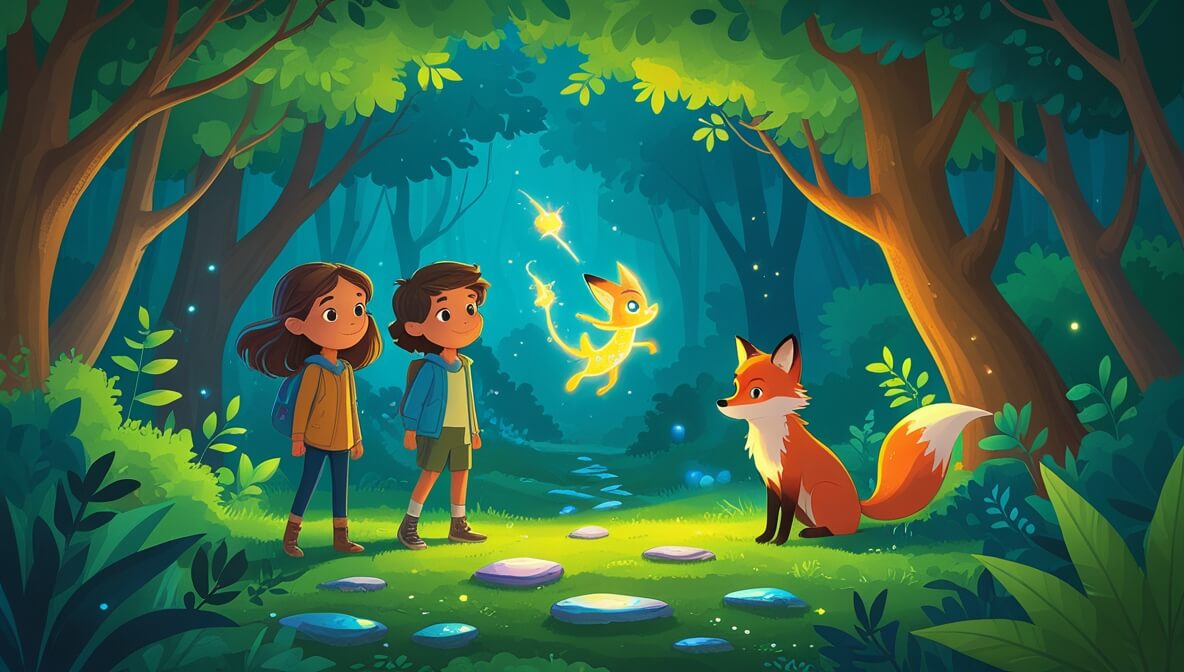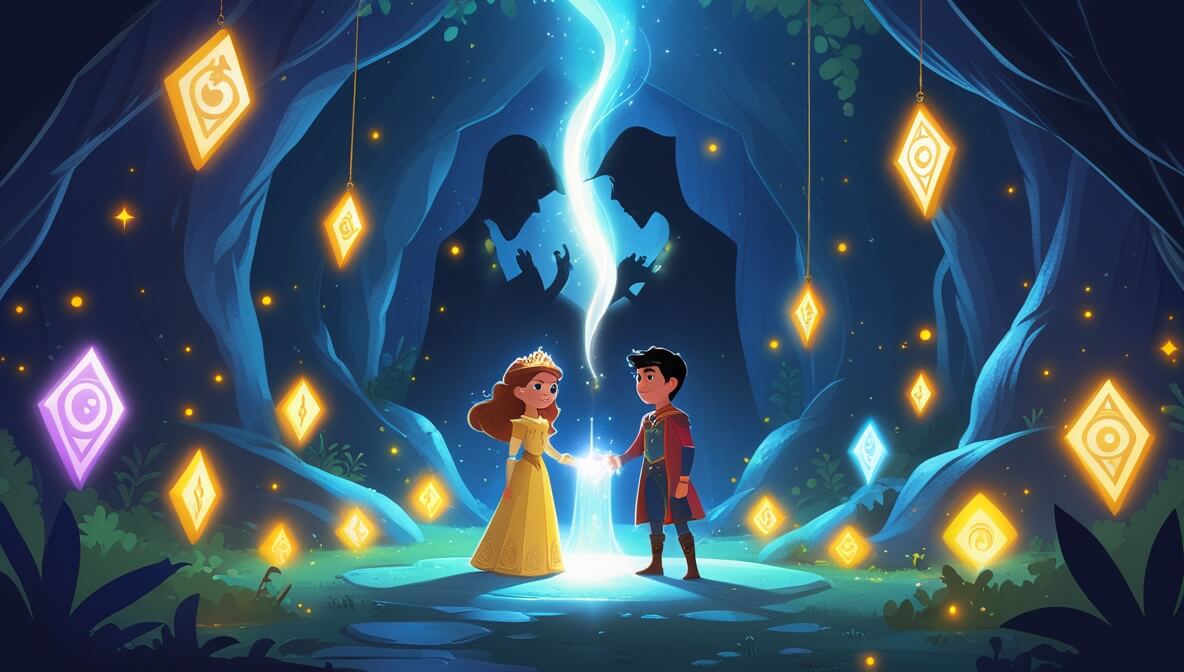Bedtime stories are more than tales told in hushed voices. They are gentle journeys that help children drift toward sleep while reinforcing vocabulary, empathy and family bonds. When a favourite fairy‑tale drags on past lights‑out, however, even the most patient listener can start to fidget. Here’s how to condense long stories without losing their sparkle and still tuck your child in on time.
Why Bedtime Stories Matter
Reading aloud at night does far more than fill a few minutes before sleep. Neuropsychologists explain that babies are wired to absorb language and that exposure to varied words creates the neural pathways needed for reading[1]. Books introduce new vocabulary and sentence patterns that parents might not use in conversation, giving children a larger mental library to draw from[1]. As kids get older, stories also allow them to walk in someone else’s shoes.
Hearing about characters from different backgrounds helps them understand other feelings and cultures, building empathy and emotional awareness[2]. Those shared moments on the pillow become a special time to slow down together; the physical closeness of snuggling over a book even stimulates brain development[3].
Consistent evening routines are also linked to better behaviour the next day. Researchers from Penn State University found that children with regular bedtimes were better able to regulate their emotions and social behaviour than peers with more erratic schedules[4]. That consistency sends a clear signal: it’s time to wind down, fostering emotional control and reducing bedtime battles[5]. Short, engaging stories fit neatly into this calming ritual.
The Case for Shorter Stories
Long tales are not always relaxing. Younger listeners have short attention spans and thrive on brief yet engaging narratives. Story‑telling experts suggest that toddlers enjoy five‑ to ten‑minute stories, preschoolers can handle ten to fifteen minutes, and elementary‑aged children can settle into fifteen‑ to twenty‑minute narratives. A predictable reading duration reassures them that sleep is coming soon, which helps their brains and bodies unwind. Pediatricians agree that including a story in the bedtime routine encourages literacy, fosters cognitive development and even helps children fall asleep more easily[6][7].
When bedtime reading runs long, kids often become restless rather than soothed. Choosing shorter books or trimming longer tales prevents over‑stimulation and keeps the routine on track. It also creates space for conversation about the story’s events, allowing children to process what they’ve heard and feel heard themselves.
Age‑Based Story Length Guide
| Age group | Recommended reading time | Notes |
| Toddlers (1–3 years) | 2–10 minutes | Use simple, repetitive language and a clear rhythm |
| Preschoolers (3–5 years) | 5–12 minutes | Introduce slightly more complex plots that still resolve quickly |
| Elementary (5–8 years) | 12–20 minutes | Choose engaging narratives with richer detail while maintaining a calm tone |
How to Condense Long Tales Without Losing Their Magic
Shortening a beloved story can feel daunting. The key is to keep the heart of the narrative intact while streamlining everything around it. Here are practical ways to do just that.
Find the Heartbeat of the Story
Begin by identifying the central theme or lesson. Is the tale about courage, kindness or a gentle adventure? Focusing on the core message makes it easier to remove side plots and unnecessary description without confusing the listener.
Story‑writing guidelines for children stress the importance of a simple structure with a beginning, middle and end[11]. That simple structure remains in place even when you shorten the tale. Introduce the main character in a peaceful setting, allow a mild conflict or goal to arise and then resolve it quickly and reassuringly[12]. By keeping the plot straightforward, you preserve the story’s coherence and comfort.
Summarise Actions and Trim Description
In long stories, detailed descriptions and extended backstories often slow the pace. Turn paragraphs of description into a single vivid sentence. Instead of detailing every step a character takes, narrate their intention and the outcome. This keeps the action moving without losing clarity. When characters speak, focus on the lines that drive the plot forward or reveal an essential feeling. You can paraphrase long conversations so that the essence remains but the dialogue flows quickly.
Use Visuals to Fill in Details
Illustrations can convey setting, character emotion and action more quickly than text alone. Picture books allow you to omit descriptive passages while still immersing your child in the scene. If you’re telling the story yourself, use hand gestures or props — like a soft toy to represent the hero — to give your child something to look at as you speak. These visual cues invite imagination and keep the story lively even as the text is condensed.
Invite Participation to Keep Attention
Interactive elements make shorter stories feel richer. Ask your child gentle questions such as “What do you think happens next?” or “How do you think the rabbit feels?” This creates an emotional connection and gives them space to imagine details you’ve left out. As the Lunesia guide notes, interactive features help maintain engagement without overstimulating the mind. You’re not just reciting a tale; you’re creating a shared experience.
Crafting a Soothing Bedtime Routine
Condensing stories works best when paired with a calm environment. Dim the lights and lower the room’s noise level. Let your child help select the book — giving them control over the choice can make them more receptive. Remember that regularity is vital: starting story time at the same hour each evening signals to the body that it’s time to slow down. Turning off screens at least an hour before bed prevents blue light from interfering with melatonin production, as pediatricians advise[6].
Before reading, skim the story to decide which parts to skip. Practice telling the shortened version out loud to ensure it flows smoothly. If you’re unsure about length, follow the age‑based guidelines above. For older children eager to hear more, let them know you’ll continue the story the next night; this builds anticipation without prolonging the current session.
Reflection and Connection
After finishing the story, take a moment to talk about it. Ask your child what they liked or how the characters felt. This simple conversation reinforces comprehension and critical thinking. It also provides another opportunity for bonding. Encouraging children to share their thoughts empowers them and signals that their opinions matter.
Final Thoughts
Condensing long bedtime stories doesn’t mean stripping them of their wonder. By focusing on the core narrative, summarising descriptive passages, using visuals, and inviting your child to participate, you can create a short yet enchanting tale that fits comfortably into a calming routine. Shorter stories also respect your child’s natural attention span and help signal that sleep is near, supporting language development, emotional health and the special connection you share[1][4].
Frequently Asked Questions
Why are bedtime stories important for my child’s development?
Bedtime stories expose children to new vocabulary and sentence structures, which help build language pathways in the brain. They also promote empathy by letting kids experience characters’ feelings and situations[2]. In addition, reading together strengthens the parent‑child bond and supports cognitive growth[3].
How long should a bedtime story be?
The ideal length depends on your child’s age. Toddlers usually enjoy five‑ to ten‑minute stories, preschoolers can handle ten to fifteen minutes, and elementary‑aged kids can relax through fifteen‑ to twenty‑minute narratives[7]. Keeping stories within these ranges helps children stay engaged without becoming overstimulated.
What’s the best way to shorten a story without losing its charm?
Identify the main theme and remove side plots that don’t contribute to that message. Summarise long descriptions and paraphrase conversations to keep the narrative moving. Maintain a clear beginning, middle and end, and use illustrations or props to convey details quickly.
Can shorter stories still improve literacy and brain development?
Yes. Reading in any length exposes children to words and ideas they might not encounter elsewhere, supporting language and cognitive development. Including a story in a consistent bedtime routine can also help children sleep better and regulate their emotions.
How do I make bedtime reading interactive in a condensed format?
Ask open‑ended questions about the plot or characters, encourage your child to predict what happens next, and use props or gestures to illustrate the action. These interactive touches keep the story engaging without lengthening it and help build a deeper connection.
_________________________________________________________________________________________
[1] [2] [3] Why Is It Important to Read to Your Child? – Child Mind Institute
https://childmind.org/article/why-is-it-important-to-read-to-your-child/
[4] [5] Consistent bedtime linked with better child emotion and behavior regulation | Penn State University
[6] 7] Article: The Benefits of Bedtime Reading for Kids featuring Dr. Leora Mogilner | Reach Out & Read of Greater NY
[8] [9] How to Write a Children’s Bedtime Story: Structure and Guidelines | Writing for Children with Karen Cioffi










